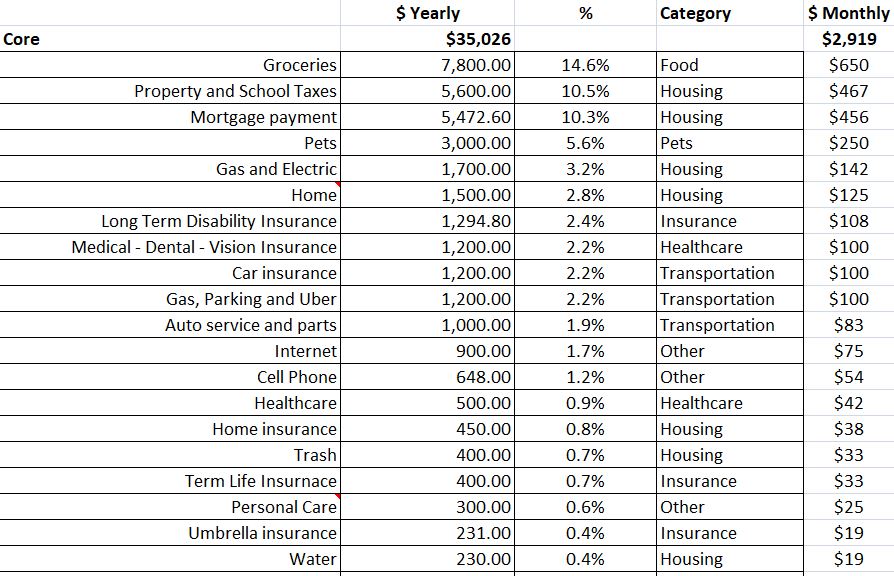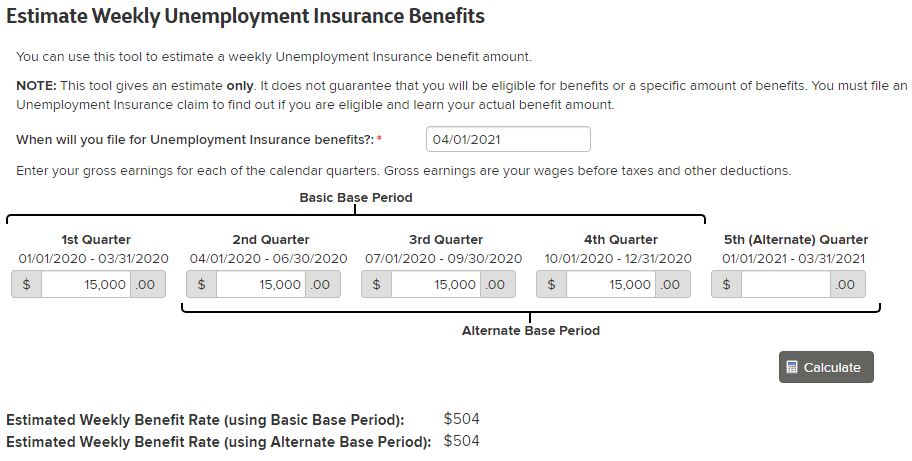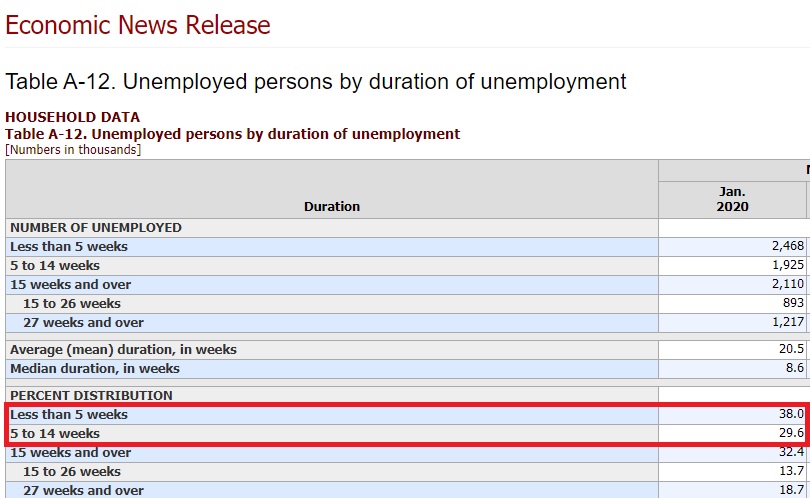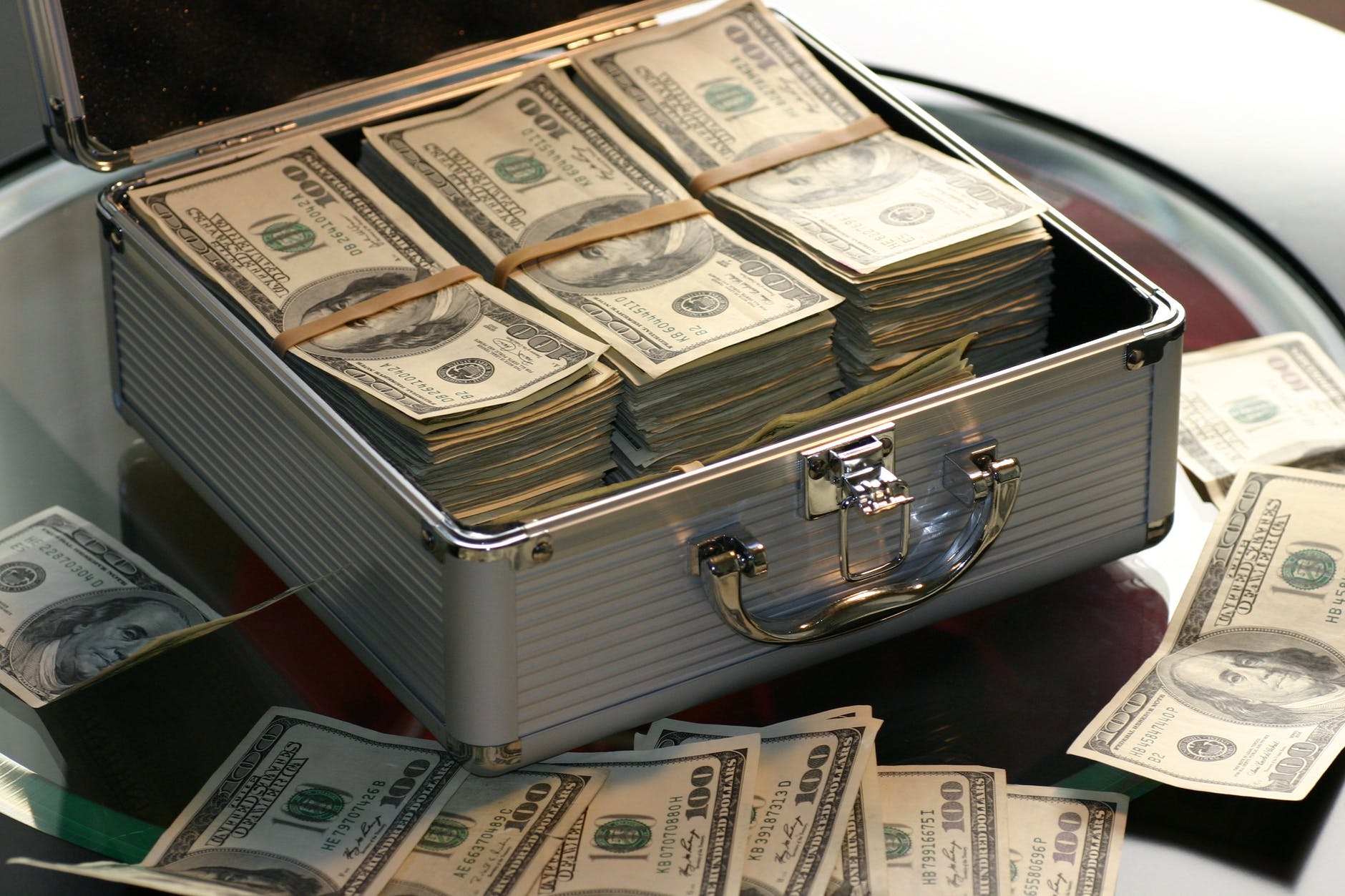
BLUF: An emergency fund can help you handle the tough financial situations that life can throw at you. There is no one size fits all answer that will be appropriate for you. Size your fund based on your current expenses, income situation, life flexibility and the planned worst case event.
A core piece of financial advice from the personal finance space is that everyone should have an emergency fund. If you follow Dave Ramsey it’s actually baby step #1 in his 7 steps to get people out of debt. There’s not much debate about that although we’ll challenge that idea in part 2 of this article.
What is all over the map is the advice for how much you should have in your emergency fund. Having 3-6 months of your expenses is a commonly thrown around rule of thumb. But why 3-6? I don’t believe in blindly following advice without understanding the detail behind it and neither should you. Having 3 months saved up and finding out you need 9 months worth to find a new job doesn’t sound like much fun! On the other end of the spectrum, there’s an opportunity cost to holding cash so making an unnecessarily large emergency fund will cost you money long term too.

Like most things in personal finance, you need to figure out what sized emergency fund works best for you. In this article we’ll explore the different things that go into sizing an emergency fund and show some examples of how you can calculate it for yourself.
Emergency Fund: What is it?
An emergency fund is money readily available to you cover a life situation that requires money to fix it. This is something where you don’t have enough money on hand or in your normal spending budget to cover it. At the low end of the spectrum this could be a unexpected car repair. The high end of the spectrum could be a loss of income for an extended period of time.
What kinds of things you use your emergency fund is a debated topic with lots of opinions. Personally, I don’t really care what you use it for. In the end you need to replenish the fund as a high priority item so when you dip into it is your choice.
Emergency Fund: How to calculate it
Step 1: Determine the worst case situation that you want to plan for.
The life situation that you want to cover is an important driver to the fund size. Covering an unexpected car repair is a very different issue than being out of work for 6 months. Think about some potential life events that could occur. Two of the most common events are a large unplanned expenses (car repair, home repair, medical expense) and a loss of income (job loss, medical issue).
Unplanned expenses can be costly but compared with having to cover your living expenses due to a loss of income there’s almost never a comparison between the two. Since an emergency fund should be sized for the worst event you think you need to deal with we’ll focus on loss of income.
Not only is loss of income is one of the biggest and scariest situations for many, it also can be the most difficult to determine. It’s highly personal because everyone’s income situation and life expenses are highly personal.

Step 2: What expenses do you need to cover?
Are you noticing that many things with FI depend on knowing how much you spend on life? Tracking expenses and budgeting are really a necessity to be successful financially. I gave a few tips at the end of this article for how to get started if you don’t track them already.
I break down the expenses of life into two high level categories that I call Core Expenses and Discretionary Expenses:
Core Expenses
Core expenses are what I call bills that you will need to plan to pay no matter what the life situation is. It’s easy to think about the bills that come due monthly like food, housing and internet. However, you still need to plan for the large infrequent bills like taxes and insurance. Sinking funds for things like pet expenses, home and car repairs should be included too. Little Johnny doesn’t care that you lost your job when he throws a ball through your window on accident.

I use an Excel spreadsheet to plan my rough budget for the year and that makes it easy to approximate monthly spending. In this case $2,919/mo.
Discretionary Expenses
Discretionary expenses are what I call everything else that isn’t essential spending. Things like travel and shopping, for example. What you put here is completely personal but it should reflect things that you consider non-essential and could cut in an emergency.

Total expenses to cover
To calculate the expenses I need to cover per month I take 100% of the core expenses because those will be required in an emergency. I take 25% of my discretionary expenses and include that too. Why? Because you still need to have some fun when your dealing with a stressful situation like a loss of income. You could go line by line and remove some things and keep others but this method is quick and good enough for me.

There you have it, a number. I need $3,300 a month on average to cover living in a lost income situation. Note that I’ve completely left out any saving during this time. I assume that in an emergency all saving is paused until the emergency situation is over. With expenses understood we need to move to the income side of the equation.
Step 3: What would your income become in an emergency?
This is an important but sometimes difficult question to answer. It’s highly dependent on your personal situation and the worst case scenario that you’re planning to cover. If you work for someone and are single then if you lose your job you’ve likely lost all income until you can an unemployment benefit. You need to understand in that situation what your income would become in a job loss.
Single income example
For example, if you make $60,000/year gross and after taxes $4,000/month, a 9 month block of time in normal circumstances would look like this.

Now the worst happens and you lose your job. How much will you get for unemployment? In NY I can use the state benefits calculator to figure out how much I would get.

In this case a $60,000/year job will get you $504/week. I like to be conservative so I’ll assume that it takes 1 month for benefits to kick in and I get 4 weeks of benefit a month. In NY unemployment benefits last for 26 weeks maximum (6 months). If I lost my job for 9 months then my monthly income would roughly look like this. There’s a couple of bonus 5 week income months in there but I’ll ignore those for simplicity.

A far cry from that $4,000/month you were making but you need to be realistic about what to expect in going through this process.
Dual income example
You can do the same thing for a dual income household where you’d want to plan for the higher income earner losing their job. In this case a household with a $6k/month and a $2k/month earner.

Since we’re worried about the worst case the high earner loses their job for the same 9 months as our previous example. The income situation now looks like this for that dual income household with the same previous assumptions of one month for benefits to kick in and then 6 months of benefits.

As you can see the $6k/mo earner didn’t get anymore money than the $4k/mo earner did. They get the same $504/week even though they make an extra $24k net a year. It’s important to understand your unemployment benefits and where they top out based on income.
Business owners can do the same kind of analysis and assume that their business stops producing income for some period of time. Or perhaps you’re a consultant with most of your business coming from a single client. What happens if you lose that key client?
Step 4: How long will it take to replace that income if lost?
You know your expenses to cover and you have an estimate of what your income will become an emergency. The last piece of the puzzle is to figure out how long to plan for an emergency with that income loss to last. Since job loss is the most common we’ll explore that situation.
Information from the U.S. Bureau of Labor Statistics can help us plan.

To summarize the data of how long it statistically takes for a person to find a new job as of January 2020:
- ~ 1 month or less (5 weeks) – 38% of people
- 3 months or less (14 weeks) – 67.6% of people
- 6 months or less (26 weeks) – 81.3% of people
Quite a wide range of possibilities. There’s also an open ended 18.7% of people that took over 6 months to find a job. That could be 7 months or 17 months.
What should you plan for? It depends on your situation. If you are a professional working in a very niche field with high salary requirements and a hesitance to move then it might take you 12+ months to find a job. If you work as nurse and aren’t tied to a location you could very well find a job in less than a month.

Here is some very broad guidance on how long to plan for losing your income. You should take into account your personal situation and what you’d be willing to do to find new work:
- 3 months – Desirable skills but not as unique, lots of job options or flexible with location. Could be early career professionals with basic salary expectations.
- 6 months – Somewhat niche skills, less jobs in that industry. Less willingness to move. Could be mid-career with larger salary expectations.
- 9-12 months – Niche skills, limited jobs in an industry or unwilling to move. Could be mid-late career with high salary expectations.
Said another way, the pickier you are about where you live, what you do and what you make, the longer you need to plan to be out of work for if you lose that job.
Step 5: Calculate the emergency fund size
Time to put all the pieces together an figure out what you care about most – the amount of money you need! From steps 2,3 and 4 you have the following information:
- Step 2: Your monthly expenses in an income loss situation
- Step 3: Your monthly income in an income loss situation
- Step 4: How long you will plan to not have income
For example, piecing this together from our previous examples let’s assume the following:
- Single Earner making $60k/year, $4k/month after taxes in NY loses their job.
- Monthly expenses for core + 25% of discretionary are $3,300/month
- Monthly income is $2,016 on unemployment starting one month after they lose their job and lasting for 6 months (state limit)
- It takes 9 months to find a new job.
I’m an Excel nerd so it’s my easy go-to tool for this stuff but you can do this manually just the same. And the verdict is…

In this situation you would need just under $18,000 in an emergency fund to cover this job loss situation without going into any debt. Time to break that piggy bank!

Double Income Example Calculation
For example, piecing this together from our previous examples let’s assume the following:
- Double income household. High earner making $85k/year, $6k/month after taxes in NY loses their job. Second earner makes $30k/year, $2k/month after taxes and keeps their job.
- Monthly expenses for core + 25% of discretionary are $5,000/month
- High earner claims unemployment and starts receiving $2,016 ($504/wk) one month after they lose their job and lasting for 6 months (state limit).
- It takes 9 months for the high earner to find a new job.

Given this situation the couple would need just under $15,000 in their emergency fund to get through this situation without going into debt. You could certainly go down the rabbit hole of details
Emergency Fund: Where to store it
An emergency fund first and foremost needs to be in a location where you have quick and easy access to the money. You don’t want a dependency on selling an asset (stock, bond, property), waiting through a slow financial transaction or some other situation that is out of your control. Remember that it’s important to focus on the things that you can control.
My preferred location to keep an emergency fund is a high yield savings account. There are a lot of good options out there and you’ll typically make 10x+ the amount of interest as you would with traditional savings account at your local bank. I list a bank I use here or just google “best high yield savings account” and decide for yourself. One thing to keep in mind is that it can take 2-3 business days to transfer funds. That’s plenty of time for most life situations that I’ve encountered. If that is a problem to you consider keeping a small percentage of your emergency fund in a bank with more instant access to the money via debit card, ATM or check.
Part 2 of the Emergency Fund series goes deeper into the options of where you can store your money and even explores the use of credit and investments options in place of savings as part of an emergency fund plan.

Action Steps:
- Talk through with a partner or a friend what emergency situations you’re worried about covering. Job loss is usually the most substantial.
- Figure out your core and discretionary expenses on average per month. This article has some tips if you don’t track expenses currently.
- Map out what your income would look like in that job loss scenario. Consider all sources of income including unemployment. He honest with yourself about what will happen.
- Make an assumption about how long it will take to find a new job.
- Calculate your fund size!
- Make a plan to start saving monthly toward that goal in a high yield savings account. Don’t be discouraged if it takes a while to hit the end goal. Every dollar added to the fund increases your safety net!
- Read Part 2 of my Emergency Fund series on where to store your money.
Like the content? Click here to subscribe to the e-mail list and have the articles delivered to your inbox.
Do you have an emergency fund? How did you calculate how much you would need?

2 replies on “Emergency Fund: Part 1 – Size – How big should it be?”
Very very good article, this is the question I was wondering about. Thanks for explaining this with breakdown. Very helpful.
I’m so glad that it was able to help you Khaled! You’re welcome.